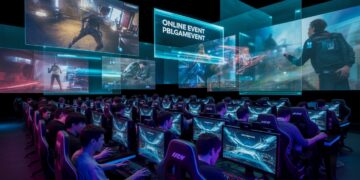If you’ve never picked up a game controller before, don’t worry you’re not alone. Whether you’re diving into video games for the first time or transitioning from mobile or PC gaming, learning how to use a gaming controller can feel like stepping into a whole new world. But the truth is, it’s not as complicated as it might look. With a little guidance and some practice, you’ll get the hang of it quickly and probably have a lot of fun along the way.
In this guide, we’ll break down everything you need to know about using a gaming controller, even if you’ve never held one before.
What Is a Gaming Controller?
A gaming controller is a handheld device that lets you interact with a video game. Instead of using a keyboard and mouse or touchscreen, you press buttons, move thumbsticks, and pull triggers to control what’s happening on the screen.
While there are different types of controllers like those for PlayStation, Xbox, or Nintendo they all serve the same purpose. No matter the brand, the basic layout is surprisingly similar, so once you learn how to use one, it’s easier to adapt to others.
This article serves as a helpful video game controller tutorial for anyone starting fresh.
Getting to Know the Buttons
When you first look at a gaming controller, it may seem like a confusing jumble of buttons and joysticks. But once you understand the layout, everything starts to make sense.
Here’s a quick breakdown of the main parts you’ll find on most modern controllers, whether it’s an Xbox controller, PlayStation controller, or Nintendo Switch Pro Controller:
1. Thumbsticks (Analog Sticks)
These are the two little joysticks you move with your thumbs. The left one typically controls your character’s movement, while the right one lets you look around or aim in games.
2. D-Pad (Directional Pad)
The D-pad is a cross-shaped button usually located on the left side of the controller. It’s used for navigating menus or performing specific moves in certain games.
3. Face Buttons
These are the A, B, X, and Y buttons on an Xbox controller, or the △, ○, ×, and □ buttons on a PlayStation controller. They’re used to jump, interact, attack, or perform other in-game actions.
4. Shoulder Buttons and Triggers
On the top of the controller, you’ll find two buttons on each side: the smaller shoulder buttons (LB/RB or L1/R1) and the larger triggers (LT/RT or L2/R2). These often control things like aiming, firing, accelerating, or zooming in games.
5. Menu and Option Buttons
Near the center, there are buttons for pausing the game, opening the menu, or switching views. You’ll often see icons like three lines or a small rectangle.
6. Home Button
Most controllers have a home button that takes you back to the console’s main screen or dashboard.
How to Hold a Controller
Holding a controller properly is key to comfort and performance. Here’s how to do it:
-
Grip the controller lightly. Your hands should rest naturally on each side.
-
Place your thumbs on the thumbsticks.
-
Your index fingers should rest on the shoulder buttons.
-
Keep your hands relaxed. A tight grip can tire you out and make your movements jerky.
Think of it like holding a TV remote only you’re using both hands and more fingers.
What Each Button Usually Does
The functions of buttons can vary from game to game, but here are some general roles:
-
Left thumbstick: Move your character
-
Right thumbstick: Control the camera or aim
-
A / X (bottom button): Jump, confirm, or select
-
B / Circle (right button): Cancel or back out
-
X / Square (left button): Reload, interact, or secondary action
-
Y / Triangle (top button): Switch weapon or tool
-
Triggers: Fire weapon, accelerate vehicle
-
Shoulder buttons: Use items, zoom, or secondary functions
Once you understand these general functions, you’ll start to see patterns across different games, especially in first-person shooters, platformers, or action-adventure games.
First Steps: Testing It Out
When you’re learning how to use a game controller, start with a beginner-friendly game or a practice mode. Here are a few great ways to begin:
-
Use tutorials or training missions included in games
-
Try open-world or sandbox games that let you explore at your own pace (e.g., Minecraft, Animal Crossing, or LEGO games)
-
Start with slow-paced games where reflexes aren’t critical
You’re not trying to master the game right away you’re just getting comfortable with how your hands move and respond.
Tips for Getting Comfortable
Like learning any new skill, using a controller takes time and patience. Here are some helpful tips:
-
Practice small movements. Get used to walking slowly, turning gradually, and pressing buttons with intent.
-
Adjust sensitivity settings if things feel too fast or too slow.
-
Play short sessions at first to avoid fatigue or frustration.
-
Use in-game button prompts as reminders—games usually tell you what to press.
-
Don’t stress mistakes. Everyone presses the wrong button sometimes!
The more you use a gaming controller, the more natural it will feel.
Common Mistakes and How to Avoid Them
1. Over-Gripping the Controller
New players often hold the controller too tightly. Try to relax your hands tight muscles lead to poor control and fatigue.
2. Mashing All the Buttons
It’s tempting to panic and press everything. Instead, focus on learning one or two buttons at a time and building from there.
3. Ignoring Settings
Most modern games and consoles allow you to customize controls, invert camera movement, or even remap buttons. Don’t be afraid to experiment.
Encouragement and Next Steps
If you’ve made it this far, congratulations! You’re already well on your way. Learning to use a gaming controller is like learning to ride a bike, it may feel awkward at first, but it becomes second nature over time.
Start with simple games and work your way up. Once you’re comfortable, try new genres like racing, sports, or action games to sharpen your skills further.









